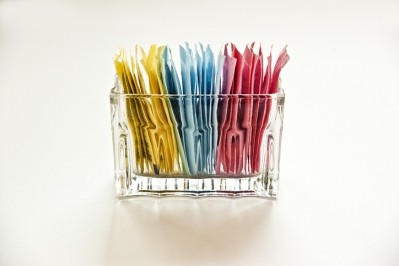CSPI et al’s letter to the FDA urges the immediate and formal removal of Red Dye No. 3, industry trade groups representing color additives request comment deadline extension

The coalition's petition posted on regulations.gov on Feb. 17 already has more than 16,000 comments as of April 7, 2023, many of which support banning FD&C Red No. 3 (Red 3), citing health and safety concerns for Americans, particularly children.
According to the Environmental Working Group’s food database, Red 3 is in more than 2,900 food products, particularly artificially flavored and colored candy, food, drinks, cough syrup and gummy vitamins. The petition argues that high Red 3 exposure in children ages 2 to 5 years, who consume twice as much of the additive than the general population, could contribute to behavioral issues.
FDA removed Red 3 from color cosmetics, topical drugs -- why not food?
Made from petroleum, Red 3 gives food, beverages and medicine a vibrant cherry-red color, and was first approved as erythrosine in 1907 and later changed to “FD&C Red No. 3” in 1939 for food, drugs and cosmetics. Based on available studies in 1969, FDA listed Red 3 permanently for food, dietary supplements and ingested drugs.
Red 3 was a consistent fixture in color cosmetics and topical drugs, despite fluctuating positions on its safety, until 1990 when the additive was banned for topical drug and cosmetic use and in all uses of lakes, which are a precipitate of the soluble dye made when the color and metallic salt are mixed.
However, Red 3 is still approved for use in food and ingested drugs despite FDA suggesting it would ban the additive from food and ingested drugs.
Following toxicity studies and reviews conducted in the late 1970s and early 1980s, FDA’s then-Acting Commissioner, Mark Novitch disclosed that the agency “should not knowingly allow continued exposure (at high levels in this case of FD&C Red No. 3) of the public to a provisionally listed color additive that has clearly been shown to induce cancer,” the petition cited.
The petition adds, “There is no scientific or public health justification for permitting the use of FD&C Red No.3 dye in food while prohibiting FD&C Red No. 3 lake in food and both the dye and the lake in cosmetics and externally applied drugs.”
Evaluations by numerous authorities, including the National Toxicology Program (NTP) Board of Scientific Counselors Technical Reports Review Subcommittee, European Commission’s Scientific Committee for Food and the international Joint Expert Committee on Food Additives (JECFA) conclude that there is convincing evidence of carcinogenicity and thyroid tumors from FD&C Red No. 3.
Decades-old evaluations by international food additive panels maintain Red 3 as a safe additive, even in high doses
A joint evaluation by the FAO/WHO Expert Committee on Food Additives (JECFA) in 1990 and the EU Scientific Committee for Food (SCF) in 1990 concluded Red 3 “has a minimal effect in humans.” A re-evaluation of Red 3 by the Scientific Panel on Food Additives and Nutrient Sciences also concluded the additive does not pose “safety concerns at current levels of exposure including other sources of exposure.”
This panel is also cited by the International Association of Color Manufacturers (IACM), stating Red 3 is safe at standard and high doses. Further a 2018 paper published in the National Library of Medicine titled Food Additives and Child Health maintained that the effects of color additives on humans, particularly children, are inconclusive. The paper states that while “the FDA has set acceptable daily intakes for each of the artificial food additives (AFCs)…these standards, as well as original safety approval for the color additives are based on animal studies that do not include neurologic or neurobiological end points.”
This underscores the theme of the debate between those for and against Red 3’s removal: conclusive, absolute findings on the additive’s safety.
The petition comes at a time when public sentiment towards synthetic additives is growing, pushing more brands to include natural and health-conscious ingredients. As more health and safety advocacy groups/associations continue to promote the benefits of natural and/or safe ingredients on CPG manufacturers, some brands are seeking natural alternatives to maintain public approval and relevancy.
‘Potentially removing the color additive listing for its use in food will significantly impact products currently on the market’
The implications of removing Red 3 from thousands of CPGs are significant across the supply chain. Removing the additive could be costly for formulators, manufacturers and marketers of products that already generate substantial revenue. Arguably, a reformulation and label change, provided the amendment passes, could reposition sales to a more unfavorable outcome.
Comments from industry trade groups that represent color additives are pending.
A letter from industry groups, American Bakers Association, Consumer Brands Association, National Confectioners Association and SNAC International requested an extension to respond to the petition.
They argue: “Our members, like FDA, are committed to the use of safe colors and would appreciate sufficient time to review the petition from CSPI. FD&C Red No. 3 has been used safely as a color additive in food, dietary supplements, and ingested drugs for decades. Potentially removing the color additive listing for its use in food will significantly impact products currently on the market.”
IACM also requested an extension to review the petition.
In response, the FDA revised the comment deadline from April 18 to May 18, 2023.





















